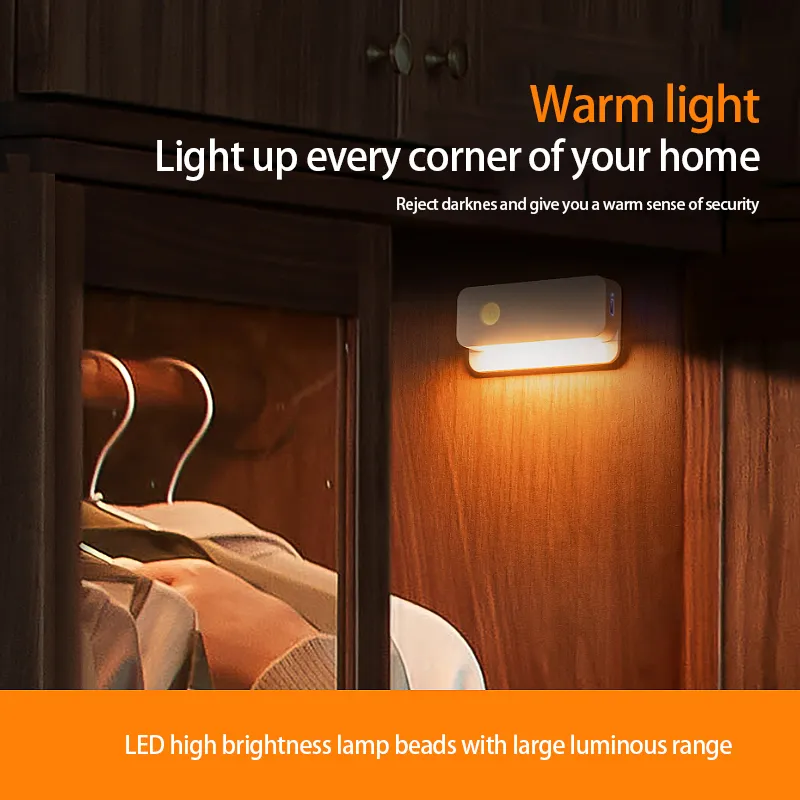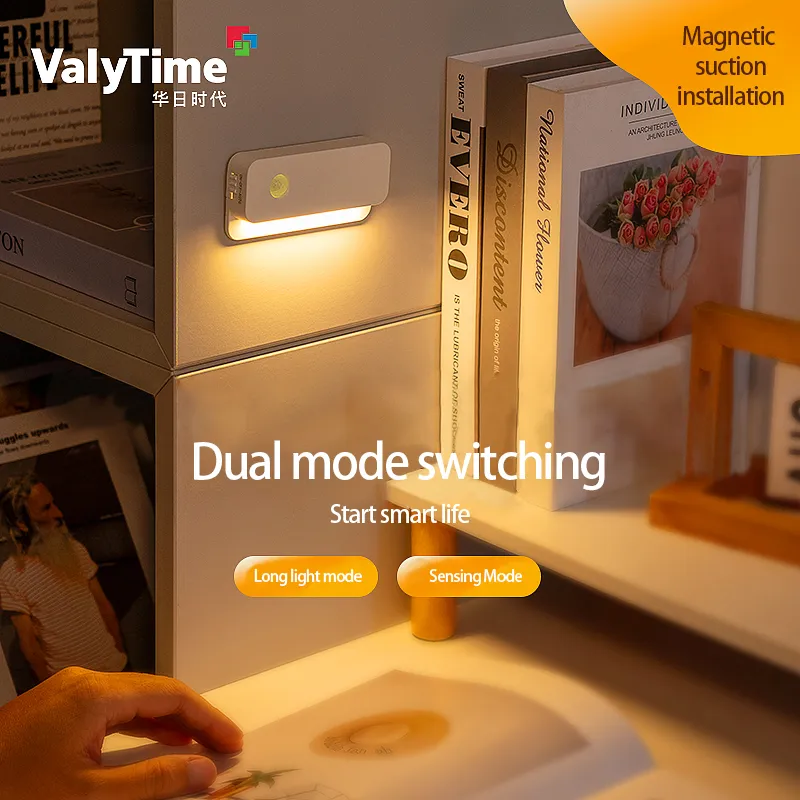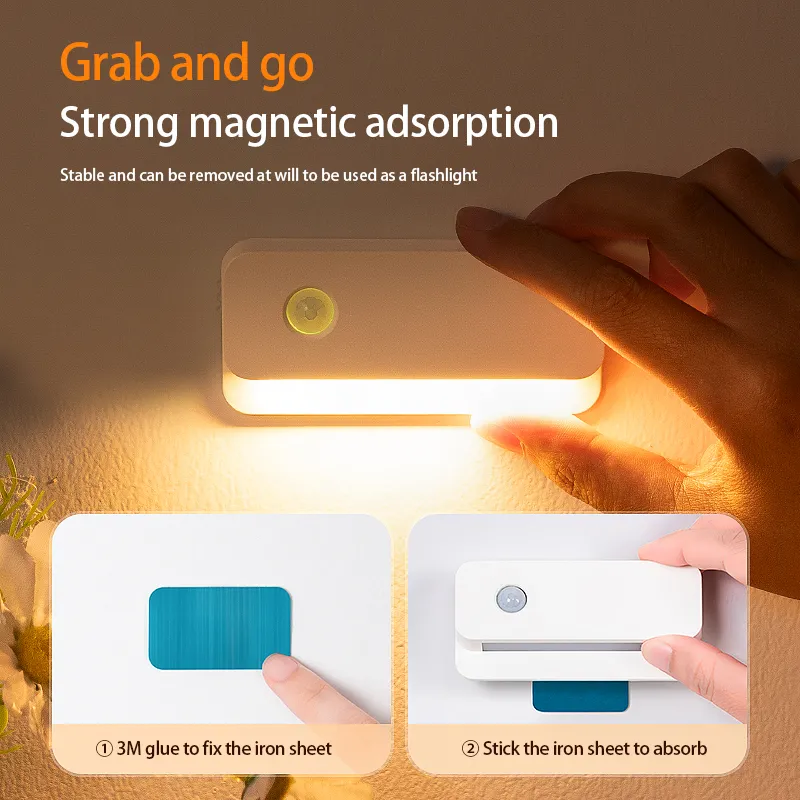Do motion sensor night lights run on batteries?
Compared to traditional plug-in night lights, motion sensor night lights offer the advantages of automatic sensing and automatic switching, providing significant convenience and safety, especially at night. So, how do motion sensor night lights work? Do they rely solely on batteries?
This article addresses the question, "Do motion sensor night lights run on batteries?" and provides an in-depth analysis of the power supply methods, characteristics, and how to choose the right batteries and light.

How do motion sensor night lights work?
Motion sensor night lights use built-in sensors to detect human movement or changes in heat, automatically activating the light. Their core technologies include infrared sensors and light sensors. The infrared sensor detects infrared light emitted by humans, enabling accurate detection of human presence in the dark. The light sensor ensures that the light activates only when ambient light is low. This way, motion sensor night lights provide safe illumination at night, turning on only when someone is active, avoiding energy waste.
Furthermore, many modern motion detector night lights feature energy-saving LED light sources. Compared to traditional incandescent bulbs, LEDs are more energy-efficient, generate less heat, and last longer. This makes motion detector night lights significantly more energy-efficient, especially for long-term use.

What are the power supply options for motion sensor night lights?
The power supply method for a motion sensor night light is an important factor to consider when choosing and using one. Three common power supply options are battery-powered, plug-in-powered, and rechargeable.
1. Battery-powered
Yes, many motion sensor night lights are indeed battery-powered. These night lights use a built-in battery to power their sensors and LED light sources. The advantage of battery power is installation flexibility, allowing users to install these lights anywhere they want, regardless of the location of an electrical outlet. They are often compact, making them suitable for confined spaces like bedside areas, hallways, and bathrooms.
However, battery-powered motion detector night lights do have some drawbacks. The most significant issue is battery life. While LEDs consume less power, their battery life is still limited if the sensor is frequently activated. To ensure long-term, stable operation, many brands of motion detector night lights utilize low-power designs to optimize battery efficiency. Battery type and capacity also affect the light's battery life. Common battery types include AA, AAA, and lithium batteries.
2. Powered by a Power Plug
Powered by a Power Plug, motion sensor night lights typically draw power directly from an electrical outlet, eliminating the need for frequent battery replacements. Powered by a Power Plug, motion sensor night lights typically offer higher brightness and more stable performance because they aren't limited by battery power. They are suitable for larger lighting needs, such as hallways and living rooms.
However, power-powered motion sensor night lights do have certain limitations. Because they require an electrical outlet, their installation location is restricted by the outlet's location, making them less flexible than battery-powered lights. Furthermore, these lights cannot be used in areas without electrical outlets. Therefore, these lights are primarily suitable for areas with easy access to a power source.
3. Powered by a Rechargeable Battery
Recently, a new category of motion sensor night lights powered by rechargeable batteries has emerged. These night lights feature a built-in rechargeable battery that can be recharged using a charger. This design combines the advantages of battery power and power from a power outlet, eliminating the hassle of frequent battery replacements and ensuring a long lifespan.
Motion sensor night lights with rechargeable batteries offer similar installation flexibility, suitable for locations like bedrooms, kitchens, and hallways. They also offer impressive battery life. Generally, a fully charged motion sensor night light can last for weeks or months, depending on the battery capacity and frequency of use. Common rechargeable batteries include lithium and nickel-metal hydride, which offer high recharge efficiency and a long lifespan.

How to Choose Batteries for a Motion Sensor Night Light?
For most battery-powered motion sensor night lights, battery selection is crucial. Battery capacity and performance directly impact the lifespan and lighting performance of the light. Here are some common battery characteristics:
1. AA Batteries
AA batteries are the most common type of battery used in motion detector night lights, especially for small fixtures. They offer advantages such as affordability, availability, and reliability. However, AA batteries have a relatively small capacity and limited lifespan, especially with frequent use.
2. AAA Batteries
AAA batteries are smaller than AA batteries and are suitable for compact and delicate motion detector night lights. However, due to their smaller capacity, AAA batteries typically have a shorter lifespan than AA batteries. Therefore, users who choose lamps that use AAA batteries will need to regularly replace the batteries.
3. Lithium Batteries
Lithium batteries, as rechargeable batteries, are widely used in high-end motion sensor night lights. Compared to traditional alkaline batteries, lithium batteries have a higher energy density and a longer lifespan. Another major advantage of lithium batteries is their light weight and compact size, making them ideal for lamps that require long-term use.
4. Nickel Metal Hydride Batteries
Nickel Metal Hydride (NiMH) batteries are typically used in devices requiring higher capacity and are suitable for motion sensor night lights that require frequent charging and long operating times. NiMH batteries are environmentally friendly and contain no harmful metals, but they have a longer charge cycle, so you need to pay attention to the battery's condition during charging.

What factors affect the battery life of a motion sensor night light?
Battery life is an important consideration when choosing a motion sensor night light. Battery life is not only affected by battery type but also closely related to the following factors:
• Brightness of the light: Brighter motion detector night lights typically consume more power and therefore require stronger batteries to ensure long-lasting operation. For nighttime illumination, it's generally recommended to choose lights with moderate brightness to avoid excessive power consumption.
• Frequency of use: The battery life of a motion sensor night light is closely related to how often the light is turned on. If the light is used frequently throughout the day, the battery will deplete faster. Conversely, less frequent use will result in a longer battery life.
• Battery capacity: Different types of batteries have different capacities; larger capacities mean longer life. For example, lithium and nickel-metal hydride batteries generally last longer than AA or AAA batteries.
• Ambient temperature: Ambient temperature also affects battery life. Extreme temperatures (high or low) can degrade battery performance, shortening battery life.
Does Huari Lighting offer energy-efficient LED solutions?
Yes. Our LED panel lamps, downlights, and track lights are designed to save energy while providing excellent brightness. All items are CE, RoHS, and ERP certified to meet international energy standards. Buyers looking to purchase eco-friendly lighting at cheap factory prices choose Huari as their supplier in China. We supply wholesalers, contractors, and brands with both standard and customized solutions.
